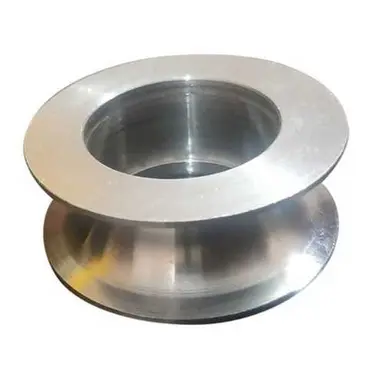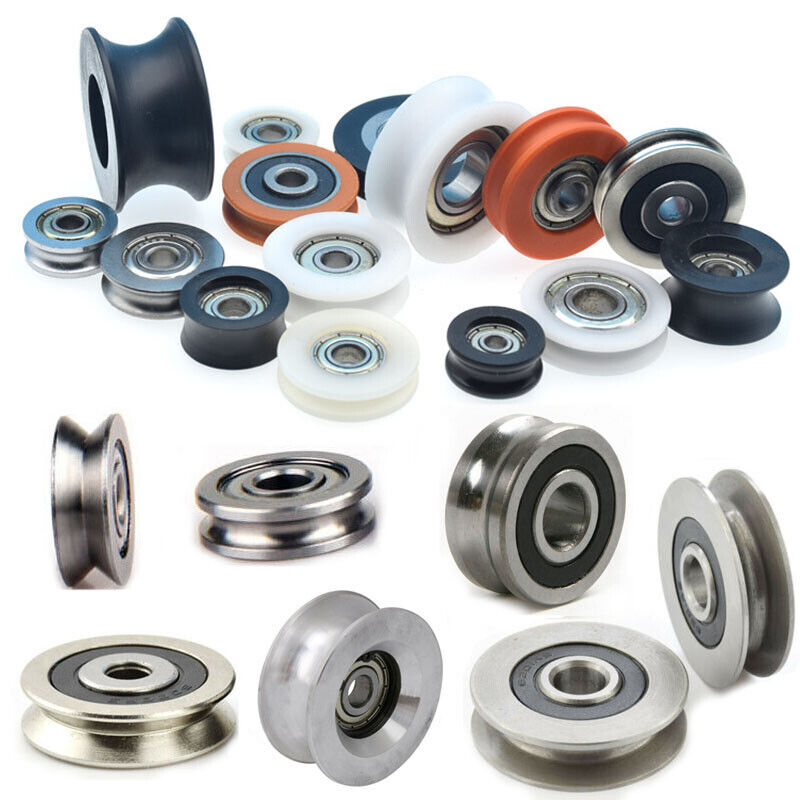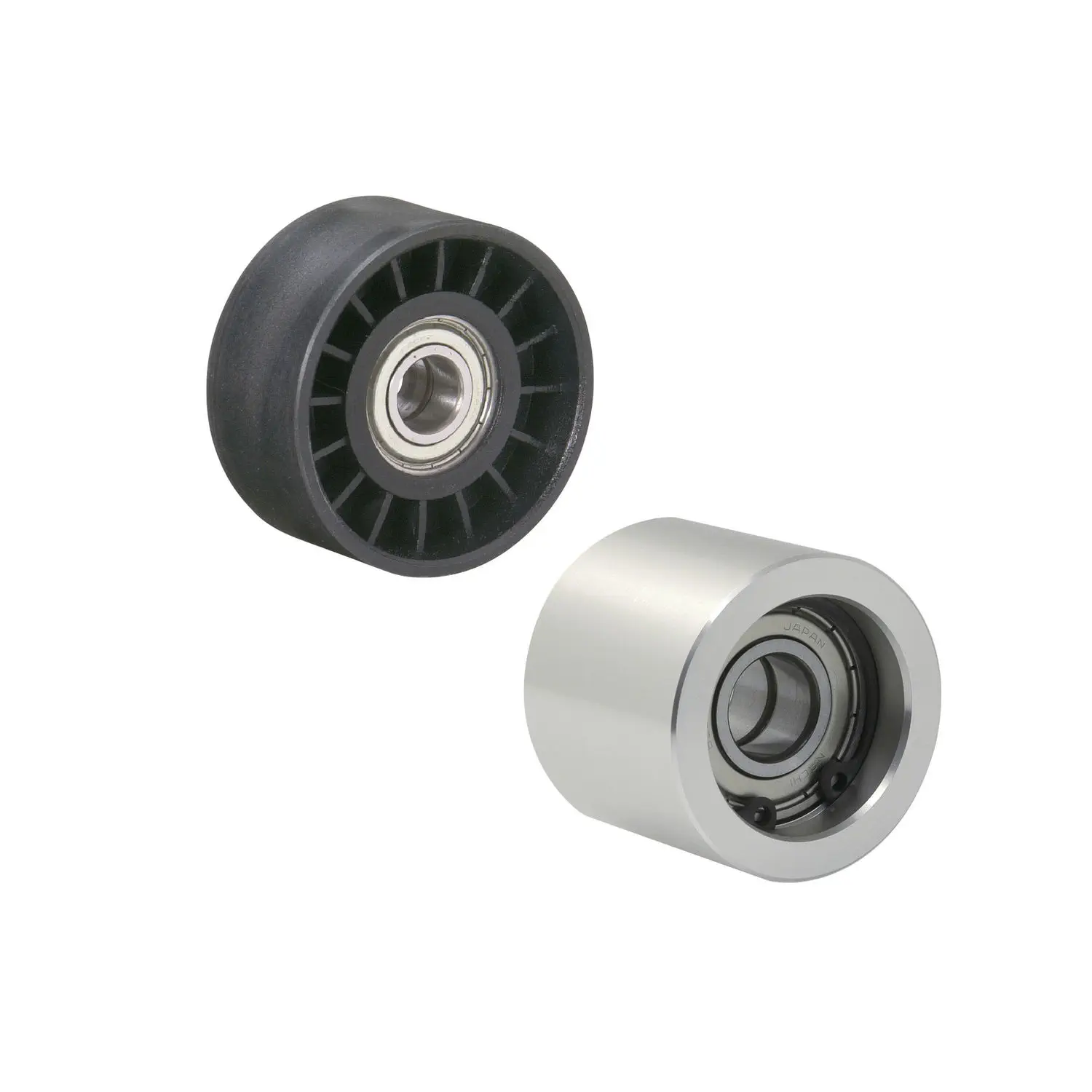Product Description
belt conveyor take up drum tail roller bend pulley
Product Application
GCS conveyor pully is manufactured as per customer requirement, with main design unfer national standard, quality inspection focusing on shaft core, welded joint, rubber material and hardness, dynamic balance and so on for longer product lifetime.
Our products are widely used in thermal power generation, harbours, cement plants, metallurgy and as well as the light duty conveying devices for industries.
|
SPECIFICATIONS |
|||
|
Product name |
belt conveyor pulley drum |
||
|
Type |
Transmission drum, Redirection drum, Driving Electric drum |
||
|
Length |
200mm-1800mm |
||
|
Materials |
Carbon steel, Stainless steel, Rubber |
||
|
Surface treatment |
Smooth, CHINAMFG grooved lagging, Herringbone lagging, Ceramic lagging |
||
|
Welding |
Submerged arc welding |
||
|
Bearing |
SKF, CHINAMFG and other brands at home and abroad |
||
|
Structure |
Tube,shaft,self-aligning bearing,bearing seat/house,hub, locking bushing,end disc |
||
About roller,we can make gravity conveyor roller,steel conveyor roller,driving roller,light middle duty conveyor roller,o-belt tapered sleeve roller,gravity tapered roller,polymer sprocket roller and so on. More details, please contact us.
Main Feature
1) CHINAMFG design, suitable for heavy lifting.
2) The bearing housing and steel tube are assembled and welded with a concentric automatic.
3) Cutting of the steel tube and bearing is performed with the use of a digital auto device/machine/equipment..
4) The bearing end is constructed to ensure that the roller shaft and bearing can be firmly connected.
5) Fabrication of the roller is effected by an auto device and 100% tested for its concentricity.
6) Roller and supporting components/materials are manufactured to DIN/ AFNOR/ FEM/ ASTM/ CEMA standard.
7) The casing is manufactured with highly composite, anti corrosive alloy.
8) The roller is lubricated and free from maintenance.
9) Woring life expectancy is up to 30,000 hours or more, depending on usage.
10)Vacuum sealed which has withstood anti water, salt, snuff, sandstone and dust proof experiments
Related Products
| Material: | Stainless Steel |
|---|---|
| Surface Treatment: | Rubber Coated |
| Motor Type: | Frequency Control Motor |
| Installation: | Horizontal |
| Color: | Customized |
| Transport Package: | Wooden Pallet |
| Samples: |
US$ 500/Piece
1 Piece(Min.Order) | |
|---|
| Customization: |
Available
| Customized Request |
|---|

How do you select the right roller pulley configuration for a specific material handling task?
Selecting the right roller pulley configuration for a specific material handling task involves considering several factors to ensure optimal performance and efficiency. Here are the key steps in the selection process:
- Identify Material Characteristics: Begin by understanding the characteristics of the materials being handled. Consider factors such as weight, size, shape, fragility, and surface properties. For example, heavy or bulky materials may require roller pulleys with higher load capacities, while fragile items may necessitate the use of cushioned or impact-resistant rollers.
- Determine Conveyor Layout: Evaluate the layout and configuration of the conveyor system. Take into account factors such as straight sections, curves, inclines, declines, or any specific requirements for diverting or merging materials. Different roller pulley types, such as tapered rollers or grooved rollers, may be needed to accommodate specific layout features and ensure smooth material flow.
- Consider Operational Environment: Assess the operational environment in which the roller pulleys will be used. Take into account factors such as temperature, humidity, presence of dust or debris, and exposure to corrosive substances. Some environments may require roller pulleys with special coatings or materials to withstand harsh conditions and prevent damage or premature wear.
- Calculate Load Capacity and Speed: Determine the load capacity and desired speed of the conveyor system. This involves considering the weight and volume of the materials being transported, as well as the desired throughput. Select roller pulleys that can handle the anticipated load while maintaining efficient operation and preventing excessive wear.
- Consider Special Requirements: Assess any special requirements or constraints specific to the material handling task. For example, if the task involves strict hygiene standards, roller pulleys made of materials suitable for cleanroom environments may be necessary. If noise reduction is a concern, selecting roller pulleys with noise-dampening features can be beneficial.
- Consult Manufacturer Guidelines: Consult the guidelines and recommendations provided by roller pulley manufacturers. They often provide technical specifications, load capacity charts, and application guidelines for different roller pulley configurations. Manufacturers can offer valuable insights and expertise in selecting the most suitable roller pulleys for specific material handling tasks.
By following these steps and considering the specific requirements of the material handling task, it becomes possible to select the right roller pulley configuration. This ensures optimal performance, longevity, and efficiency in material handling operations.

What role do roller pulleys play in controlling the direction and flow of materials?
Roller pulleys play a crucial role in controlling the direction and flow of materials in conveyor systems. They contribute to the efficient and reliable movement of materials along the desired path. Here’s how roller pulleys accomplish this:
- Change of Direction: Roller pulleys are used to change the direction of the conveyor belt, allowing materials to move along curved or angled paths. By using a combination of different-sized roller pulleys and carefully designed conveyor geometry, materials can be smoothly redirected as needed.
- Belt Tension and Tracking: Roller pulleys help maintain proper tension and tracking of the conveyor belt. Tensioning pulleys, also known as snub or take-up pulleys, are used to apply tension to the belt, ensuring it remains properly aligned and taut. Tracking pulleys, such as crowned or V-shaped pulleys, assist in keeping the belt centered and preventing it from drifting off-course.
- Controlled Material Flow: The arrangement and spacing of roller pulleys influence the material flow on the conveyor belt. By strategically positioning rollers, it is possible to create gentle inclines or declines, control the speed of material movement, and prevent material accumulation or blockages.
- Impact and Damage Reduction: Roller pulleys, particularly impact rollers, help absorb the impact of heavy or sharp-edged materials as they land on the conveyor belt. They cushion the impact, reducing the risk of belt damage and extending its lifespan. Roller pulleys also minimize friction between the belt and the pulley surface, reducing wear and tear on the belt and maintaining its integrity.
- Material Centering and Stabilization: Certain roller pulley designs, such as tapered rollers, assist in centering and stabilizing materials on the conveyor belt. Tapered rollers gradually guide materials towards the center of the belt, preventing them from veering off-course or getting stuck along the edges.
Overall, roller pulleys are essential components in controlling the direction and flow of materials in conveyor systems. They enable smooth changes in direction, maintain belt tension and tracking, control material flow, reduce impact and damage, and assist in material centering and stabilization. By utilizing the appropriate roller pulleys and optimizing their configuration, conveyor systems can effectively transport materials along desired paths with precision and reliability.

In which industries and applications are roller pulleys commonly used?
Roller pulleys are widely used in various industries and applications where there is a need for efficient material handling and movement. Here’s a detailed explanation:
Industries:
1. Manufacturing and Production: Roller pulleys are extensively used in manufacturing and production industries for conveyor systems that transport materials and products along assembly lines. They facilitate the smooth movement of items during processes such as sorting, packaging, and assembly.
2. Mining and Quarrying: Roller pulleys are commonly employed in mining and quarrying operations to transport bulk materials such as ores, coal, gravel, and sand. They are essential components in conveyor systems that facilitate the efficient extraction and transportation of mined materials.
3. Warehousing and Distribution: Roller pulleys play a crucial role in warehousing and distribution facilities, where they are used in conveyor systems to move goods, packages, and pallets. They enable efficient material flow, sorting, and loading/unloading operations in warehouses and distribution centers.
4. Agriculture and Food Processing: Roller pulleys are utilized in the agricultural sector for handling crops, grains, and feed. In food processing plants, they are essential for conveying and processing various food products such as fruits, vegetables, baked goods, and beverages.
5. Automotive and Aerospace: Roller pulleys find applications in the automotive and aerospace industries for assembly lines and material handling systems. They are used to transport components, parts, and finished products during manufacturing processes, ensuring smooth and efficient production operations.
6. Construction and Building Materials: Roller pulleys are employed in the construction industry for handling building materials such as concrete blocks, bricks, lumber, and pipes. They are utilized in conveyor systems for efficient material transport and placement at construction sites.
Applications:
1. Conveyor Systems: Roller pulleys are a fundamental component of conveyor systems used in various industries. They facilitate the movement of materials along belts or chains, enabling efficient material handling, sorting, and transportation.
2. Material Handling: Roller pulleys are used in applications involving manual or automated material handling, such as loading/unloading operations, pallet handling, and material transfer between different processing stages.
3. Sorting and Distribution: Roller pulleys are employed in sorting systems that separate items based on criteria such as size, weight, or destination. They enable precise and controlled movement of items along sorting lines.
4. Accumulation and Storage: Roller pulleys with built-in braking mechanisms are utilized in applications that require accumulation and storage of materials or products. They allow for controlled stopping and accumulation of items before further processing or distribution.
5. Power Transmission: In some applications, roller pulleys are used as part of power transmission systems, where they transfer rotational motion and power between different components or machinery.
6. Automated Guided Vehicles (AGVs): Roller pulleys are integrated into AGVs, which are autonomous vehicles used for material transport in industries such as warehousing, manufacturing, and logistics. The rollers enable smooth movement of the AGVs and efficient transfer of materials.
In summary, roller pulleys are commonly used in industries such as manufacturing, mining, warehousing, agriculture, automotive, aerospace, and construction. They find applications in conveyor systems, material handling, sorting and distribution, accumulation and storage, power transmission, and automated guided vehicles. Roller pulleys play a vital role in facilitating efficient material movement, improving productivity, and streamlining operations in a wide range of industries and applications.


editor by CX
2023-11-06






